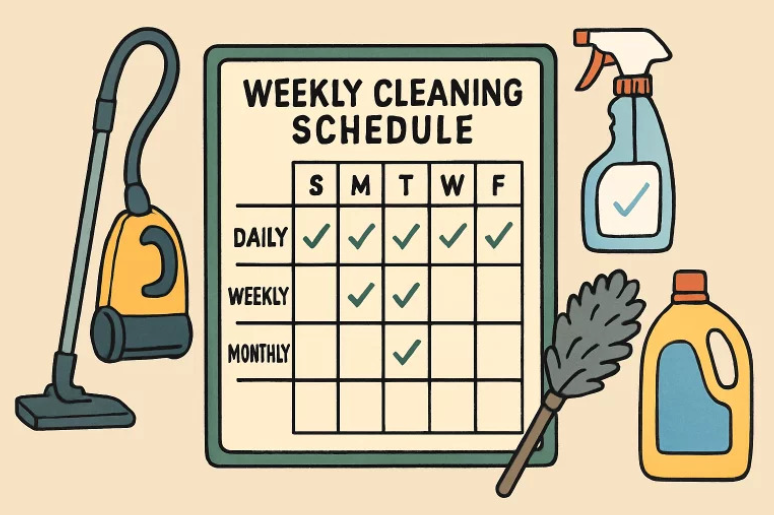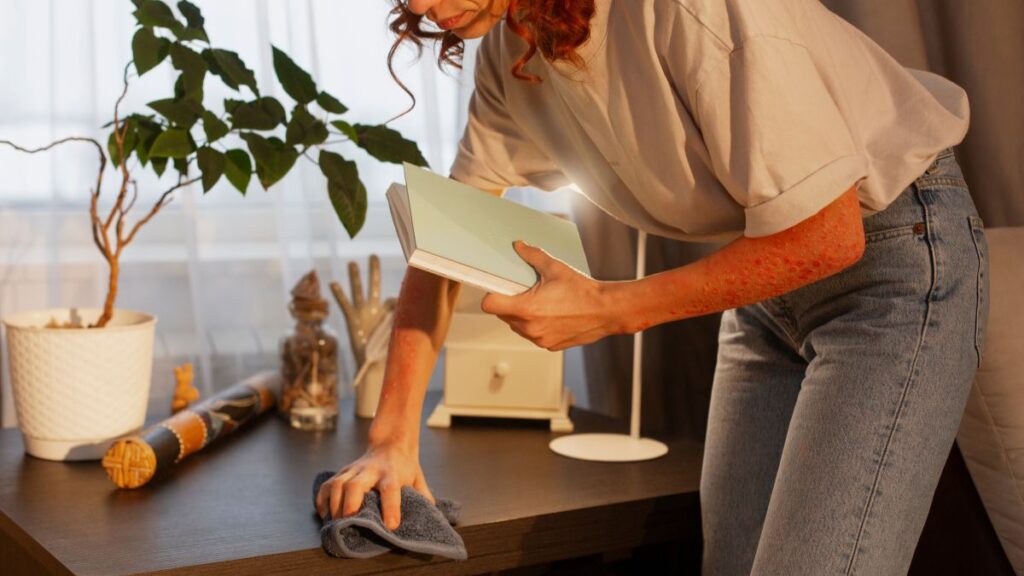Maintaining a clean and organized home often seems like a daunting, never-ending challenge, especially for busy households or individuals who juggle demanding work schedules, family obligations, and personal commitments. When time is scarce, cleaning can easily fall to the bottom of your to-do list, only to resurface later as a source of stress and overwhelm. However, building a strategic and efficient cleaning routine does more than keep your home visually pleasing—it can completely transform how you experience and interact with your living space. By adopting a few key techniques and using the right resources, like Sparkulous, you can streamline your cleaning process, ensuring your home stays effortlessly tidy while freeing up valuable time to spend on things you genuinely enjoy.
Maintaining a clean and organized home enhances the living environment and boosts mental well-being. A well-organized living space promotes relaxation, focus, and stronger relationships. An efficient cleaning routine allows for full home enjoyment without constant clutter. This comprehensive guide provides a sustainable, efficient house cleaning routine that anyone can follow, regardless of their busy schedule.
Establish a Cleaning Schedule
One of the most effective ways to keep your home consistently clean is to create a routine that divides cleaning tasks into daily, weekly, and monthly segments. This method ensures no part of your home gets neglected, and chores never have the chance to accumulate to stressful levels. Rather than viewing cleaning as a massive, all-at-once ordeal, breaking it down into regularly scheduled activities prevents it from ever feeling overwhelming. For example:
- Daily: Make each bed to instantly create a sense of order in every bedroom, wash dishes or load the dishwasher after each meal to prevent piles from forming, give kitchen counters a quick wipe-down to maintain hygiene, and take out the trash so odors never linger.
- Weekly: Vacuum carpets and rugs to remove dirt and allergens, mop hard floors for shine and cleanliness, thoroughly clean bathrooms and refresh towels, and dust all commonly touched surfaces to keep allergens and grime at bay.
- Monthly: Clean larger appliances like the refrigerator, oven, or washing machine, wash interior windows to let in more natural light, organize pantry shelves and closets to ensure long-term storage solutions, and wipe down baseboards and ceiling fans to banish hidden dust.
Assigning certain chores to specific days cultivates a healthy rhythm and predictability, even during the busiest weeks, that’s easy to stick to. Cleaning experts widely endorse this systematic approach for its proven ability to save time and stress. Learn about creating a cleaning schedule you can stick to for more details and inspiration on developing your personalized routine.
Declutter Regularly
Clutter doesn’t just make a space look untidy—it directly impacts how easily and efficiently you can clean every surface and corner of your home. When countertops, tables, and floors are covered with unnecessary items, dusting and vacuuming take longer, and dirt accumulating unnoticed is much easier. Regularly decluttering your home—removing outdated magazines, bagging old clothes for donation, or finally recycling unused gadgets—makes every subsequent cleaning session faster and more effective. Even dedicating just ten to fifteen minutes each week to sort through clutter-prone spaces like drawers, closets, and toy bins can result in a noticeably lighter and more organized environment within a month or two.
To avoid feeling overwhelmed by decluttering, start small and tackle one area at a time. Focus on a single drawer, a closet corner, or a shelf each week rather than the whole space at once. Celebrate every small victory, as even modest progress increases over time, reducing the chance of clutter returning. For more insight on making the process manageable and enjoyable, discover strategies to make decluttering manageable and enjoyable, turning this task into a regular, stress-free part of your cleaning success.
Involve the Whole Family
One person has no reason to shoulder the entire responsibility of keeping a home clean. When everyone who shares the living space also shares the chores, it lightens the load. It fosters a greater sense of teamwork, accountability, and pride in maintaining a welcoming environment. Assign tasks according to age, physical ability, or interest to make the process collaborative and fair. Young children can easily help by picking up toys, putting dirty clothes in hampers, or making their beds, reinforcing positive habits early. Teenagers can handle more involved chores such as vacuuming, dusting, sorting laundry, and unloading the dishwasher, helping to build skills they’ll use later in life. Adults should tackle deeper cleaning projects and organizing shared spaces like kitchens, entryways, and bathrooms, ensuring standards are maintained.
Establishing clear expectations from an early age is crucial—it empowers everyone to contribute and guarantees the home is cared for by everyone living there. Make the experience positive by playing energetic music, setting up reward systems, or making it a friendly competition. These strategies help make cleaning a collaborative, even bonding, exercise rather than a dreaded obligation. You can explore more tips on involving the whole family in cleaning routines, making teamwork an enjoyable and productive tradition in your home.
Use Efficient Cleaning Tools
Tools and cleaning products are essential for simplifying each chore and improving results. Investing in high-quality supplies doesn’t just make cleaning easier; it can also dramatically cut down on the time required and ensure more thorough results every time. Here are some key recommendations for a more streamlined cleaning experience:
- Microfiber cloths: These versatile, reusable cloths are excellent for trapping dust and debris on virtually any surface. They reduce your reliance on chemical cleaners and save money and waste.
- Quality vacuum cleaner: Choose a vacuum fitted for your flooring—whether carpet, hardwood, or tile—and consider one with strong filtration to reduce indoor allergens and dust. The right model makes regular cleaning far less strenuous and more effective.
- Multi-purpose cleaners: Simplify your cleaning supply closet by selecting safe, all-in-one cleaners that work well on multiple surfaces, from countertops to bathroom fixtures. This reduces clutter and keeps cleaning quick and convenient.
Routine maintenance of your tools, such as washing mop heads and emptying vacuum canisters, is equally important for maximizing their efficiency. Check out expert advice for additional time-saving tips and to stay up-to-date with the latest cleaning innovations.
Break Tasks into Manageable Segments
Breaking down cleaning tasks into manageable segments can help prevent procrastination and burnout. Focus on a single room or section at a time, and set a timer for a 15- to 30-minute cleaning sprint to maintain focus and prevent fatigue. This segmental approach, known as “slow cleaning,” helps create a steady routine and prevents physical and mental fatigue. This method will consistently establish a sustainable rhythm, keeping your home clean year-round with minimal effort and stress. Implementing these strategies can help build and maintain an efficient house cleaning routine tailored to your unique needs and lifestyle. Consistency is key, and using supportive resources can keep your space organized, refreshed, and ready for guests or relaxation.







